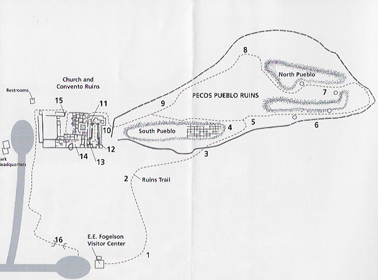
Location
On south side of church (N35D32'59.820 X W105D41'20.741)
Flowers first observed: 6/7/17
Plant w/Flower

The Flower

Distribution
"USA: AZ , CO , IL , KS , MT , ND , NE , NM , NV , NY , OK , SD , TX , UT , WY
Native Distribution: MT to AZ, e. to w. ND, w. KS, TX & n. Mex.
Native Habitat: Sandy roadsides & fields" (Wildflower.org)
Description
"Herbaceous annual, stems erect, to 45 cm tall, branching simple, ascending, or decumbent, stems ash-gray and stiff hairs, with scattered long hairs, sometimes becoming dense. Leaves: Alternate, basal leaves spatulate, oblanceolate, or ovate, entire or toothed towards the base, to 5 cm long, cauline leaves lanceolate to oblanceolate, usually pinnatifid into narrow lobes. Flowers: White, becoming pink with age, with 4 petals, to 40 mm long, hypanthium 15-35 mm long, hairy at the throat, deciduous after flowering, sepals 4, stamens 8, unequal, stigmas with 4 linear lobes. Fruits: Capsule cylindric, 2-4 cm long, 4-celled, ribbed, dehiscent, with many seeds." (SEINet)
Ethnobotanical Uses
Food:
"Apache Fruit Fruits eaten for food. Apache, Chiricahua & Mescalero Sauce & Relish Seeds ground and made into a gravy. Soup Seeds boiled in soups. Special Food Fruit chewed as a delicacy without preparation." (Moerman 361)
Medicine:
"Hopi Ceremonial Medicine Used to ward out the cold through prayer. Keres, Western Antirheumatic (External) Poultice of plant used for swellings. Navajo, Ramah Ceremonial Medicine Dried flowers used as ceremonial medicine. Orthopedic Aid Decoction of root taken and used as a lotion for strain from carrying heavy load. Panacea Decoction of root taken and used as a lotion for muscle strain, a 'life medicine.' Root used a 'life medicine. Throat Aid Compound poultice of plant applied for ''throat trouble'." (Moerman 361)
Other Uses:
"Hopi Ceremonial Item Flower used ceremonially as the 'white flower.' Decorations Flowers used by marriageable maids in their hair on holidays. Plant used for tobacco. Zuni Ceremonial Items Chewed blossoms rubbed on the bodies of young girls so that they could dance well and ensure rain. The blossoms were given by the High Priest and the Sun Priest of the Corn Maidens. The girls chewed the blossoms, ejected the mass into their hands, and rubbed it on the neck, breast, arms, and hands, ensuring that they would dance well so that it would rain and the corn would grow." (Moerman 361)
Internet Links